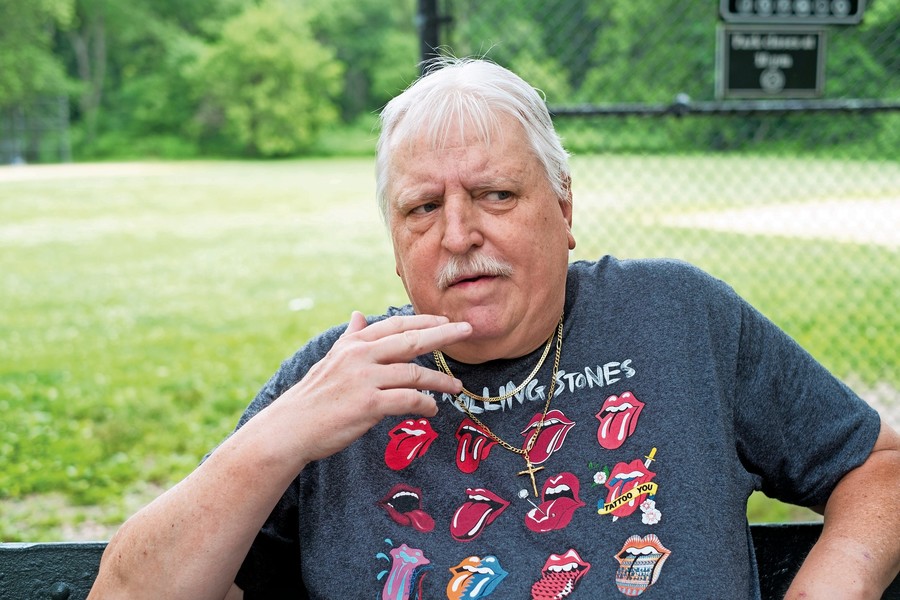Disability hearings wait time tops 2 years
Ted Grohowski spent five days during a recent week in the hospital suffering from tender, infected ulcers on his feet — his sixth overall visit for the issue. The blisters are so painful, they often make him unable to stand up or walk.
But for the 64-year-old, it is only one ailment on a laundry list of illness and injury.
Some 14 years ago, Grohowski had a knee replacement that is now starting to fall apart. Last August, his left kidney was removed because of a cancerous tumor.
He has a rotary cuff tear in his right shoulder that sometimes makes him unable to lift his head.
So, when Grohowski walked into the Yonkers Social Security office in April to file for disability, he thought it was a no-brainer. Two months later, however, the office sent him a letter rejecting aid, stating he “did not meet our standards.”
“I’m a dead man walking, and they still won’t give me that,” Grohowski said. “It’s not like I’m trying to steal something. That’s my money.”
For most of his adult life, Grohowski sold jewelry in midtown Manhattan. While he enjoyed the work, the days were filled with long hours standing on his feet. After a while, it proved to be too agonizing, and he stopped working altogether more than a year ago.
He plans on appealing the Social Security Administration’s decision, which means he’ll have to go to court and state his case. But according to the disability adjudication and review office, Grohowski could wait as long as two years before he can appear before a judge.
“I didn’t know that,” Grohowski said. “I’ll probably be dead by then.”
There is only one office that tries Social Security disability cases in the Bronx, and it’s located at 226 E. 161 St. The average waiting time for a court date there, according to the administration, is 20 months.
“I really feel that the wealthiest country in the world and the best country in the world can do better for its own people,” Arlene Feldmeier, a Social Security and disability lawyer, said.
Feldmeier worked as a lawyer at the Social Security Administration for more than 20 years. She met her husband at the agency, and the two left to start their own practice in Riverdale in 2014.
Budget cuts don’t help
One of the reasons there is such a backlog of cases, she said, is because of the federal government’s continual budget cuts to the Social Security program. President Donald Trump already has proposed another $64 million cut to the disability agency’s $813 billion budget.
Paired with monetary loses, the administration has also seen a steadily climbing amount of cases due to the fact that the baby boomer generation is aging. All of this results in less resources and a higher caseload, creating a long waiting list.
The delays are bad in the Bronx office, but Feldmeier stressed no one in that office — where she worked for nearly 10 years — are to blame.
“These are dedicated people and they’re nice people,” she said. “They care about the claimants. The staff and the judges really want to do the right thing, and this is the hand that they have been dealt.”
John Shallman, the Social Security Administration’s regional communications director, said that the waiting times are a “top priority” for the agency.
Last year, the administration developed a plan called “Compassionate and Responsive Service,” focusing on addressing the problem through technological improvements like case management systems or electronic disability folders as well as adequate amount of staffing and training exercises.
Social Security’s judicial system is the largest court system in the country, with more judges than any other entity in the federal government. It’s easy to see why — everyone has a Social Security card.
In order to file for disability, someone needs to have an illness or an injury that makes it nearly impossible to work, according to Feldmeier. Their condition has to last, or be expected to last, for at least one year.
The process begins by filling out an application at the agency, like what Grohowski did earlier this year. After a simple physical exam, the initial application decision is given fairly quickly, in about two or three months.
A third of those claims are denied, according to Feldmeier. As a result, many people appeal the decision. And that’s where the waiting begins.
No work, no pay
Someone claiming disability is encouraged not to work during the period between requesting a hearing and actually appearing before a judge. That means no income for months going into years, which can have a devastating toll on families.
“It’s horrible,” Feldmeier said. “It’s a dreadful situation for them.”
It also means no money to visit a doctor. This, Feldmeier said, can come back to haunt them during their hearing — it could look as though the applicant wasn’t seeking treatment because they are not truly disabled.
While Feldmeier works for her clients to present the most convincing case to a judge — which involves gathering medical records, speaking with doctors, and seeing vocational experts to see what jobs are available for someone with a certain disability — she is aware that disability fraud still exists.
“It’s not a giveaway program,” Feldmeier said. “One of the reasons that it takes so long is because we’re being very careful with the people’s money.”
Grohowski plans to move forward with his appeal, but has yet to start the process. He’d like to get the ball rolling soon, but has been sidetracked helping his son, who is battling health issues of his own.
Grohowski originally thought he would have a hearing by the end of the summer, but that notion has disappeared.
“It’s ridiculous,” he said. “I shouldn’t even have to go through this process.”






